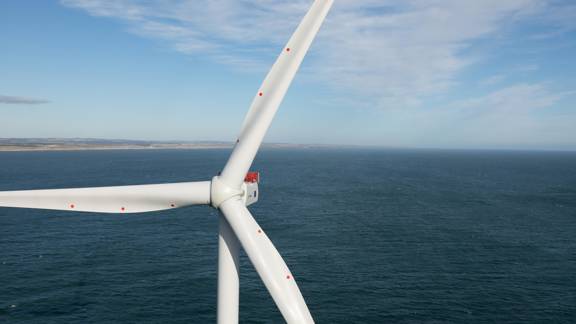Realising Scotland’s potential in floating wind energy
15 Feb 2024 • 4 minute read
Through the ScotWind leasing round, an extra 30 gigawatts of wind energy could be generated in Scotland.

Offshore wind generation is set to get a major boost in Scotland from the ScotWind leasing round.
Currently, 8.8 Gigawatts (GW) is generated by onshore wind in Scotland, with 2.1 GW from offshore wind. Over the next 10 to 15 years, there are plans to increase this capacity to 42 GW. More than 30 GW of this total will be from offshore wind farms.
Enhancing Scottish floating wind capabilities
Under the ScotWind initiative, developers have applied for seabed rights to build large offshore wind farms in Scottish waters.
If all 20 approved ScotWind projects proceed as planned, the total energy generation capacity would be 30 GW. Approximately 19.2 GW would come from 14 floating wind farms, which can generate more energy from deeper waters with stronger winds. The remaining projects are bottom-fixed wind farms.
Scotland already has floating wind expertise. In 2017, the world’s first commercial floating wind farm, Hywind Scotland, began operations.
In 2023, there was another world-leading project launched in Scotland. The world’s deepest wind turbine foundation was installed at Seagreen, off the coast of Angus to the east of Scotland.
Meanwhile, there are further developments to expand Scotland’s floating wind capacity. The Innovation and Targeted Oil & Gas (INTOG) leasing round has several more floating wind projects in the pipeline.
Scottish offshore wind expansion
The majority of ScotWind projects are planned for the waters off the east of Scotland. Among them is the project with the highest energy-producing capacity in the leasing round. Ossian floating wind farm will be capable of generating 3.6 GW. The project is being developed in collaboration with SSE Renewables, CIP, and Marubeni.
ScottishPower Renewables is also developing three new offshore wind farms with a combined capacity of seven gigawatts. These include two floating wind farms being built in partnership with Shell. The third ScottishPower Renewables development is the only ScotWind project off the west coast of Scotland. There's also MachairWind, a fixed offshore wind farm with a capacity of two GW.
“It is very much a sign of ambition and confidence that Scotland has both the waters and aspects of the supply chain to deliver this. But more work is needed to develop the rights supply chain here in Scotland,” adds Rennie.
Business opportunities in offshore wind
Development, operation, and maintenance of Scotland's new offshore wind turbines are expected to generate many economic opportunities.
Projects in the leasing round represent a considerable investment for Scotland. The Scottish Government requires all ScotWind developers to use the domestic supply chain as much as possible. Turbines, foundations, mooring system components and cables are all essential supply chain components. The aggregate value of materials and parts is projected to be worth several billion.
Building resilient grid connections
As with any new renewable installations in the UK, there remain challenges with grid connection and energy storage. As a result, many proposed projects have stalled. However, hydrogen offers a solution to both problems.
Using wind energy to power electrolysers that split water into its chemical parts eliminates the requirement for a grid connection. The Hydrogen produced can also be stored for later use.
“For a number of the ScotWind projects, there are questions about getting a grid connection,” says Rennie. “Some will and some may not. If they can’t, the only way they can proceed is to produce hydrogen, and either transport it back to shore or store it.”
Hydrogen produced from renewables or low-carbon methods is crucial in Scotland’s energy transition ambitions to reach net zero by 2045. This is five years ahead of most countries. Scotland has ambitions to have five gigawatts of installed production capacity for hydrogen by 2030. By 2045, this total is projected to rise to 25 gigawatts.
“We are attracting a lot of attention from countries that are looking at floating wind,” says Paul O’Brien, manager of the DeepWind offshore wind cluster. “A lot of nations are going to be coming here to see how you achieve this.”
You might also be interested in
-
Offshore wind industry opportunities in Scotland
Learn more about Scotland’s thriving renewables industry and dynamic offshore wind opportunities.
-
Masdar's green investment in Scotland
Hywind, the world's first floating offshore wind farm, is now providing clean energy to 20,000 Scottish homes, thanks to a £52.5 million Masdar partner investment.
-
How Scottish advances in floating wind energy can reduce oil & gas emissions
Learn about the innovative Scottish wind energy projects designed to decrease carbon emissions from North Sea platforms.
Get the latest updates from Scotland
Got a question?
We’re always ready to help. Send us an enquiry, or give us a call.
